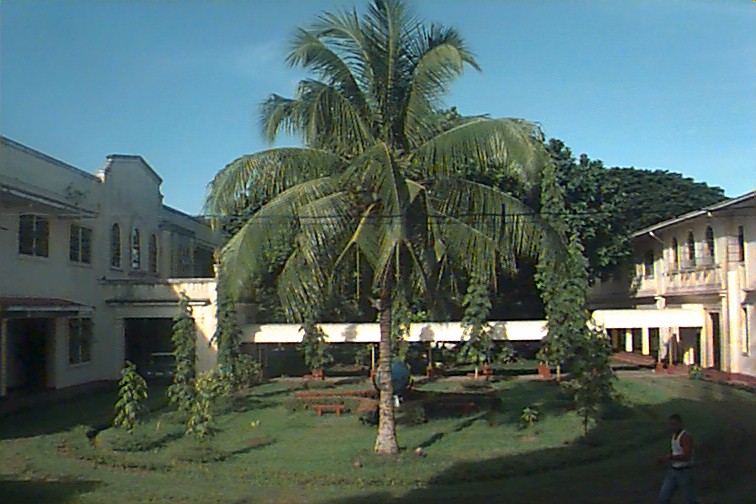Our Mission in Davao
An evaluation of our work compels us to examine what was done before our coming. The Christianization of the Philippines started in 1565 with the colonization of the archipelago by Spain. As early as 1600, there were about 400 Spanish Missionaries in the Philippines, primarily in Luzon and the Visayas. The evangelization effort in the southern island of Mindanao was blocked by the opposition of the Muslims who resisted any form of foreign presence. The conquest of the Muslims in 1840 enabled the missionaries to begin their evangelization of Mindanao.
When the PME Fathers arrived in the Philippines in 1937, we were given the pastoral care of the Province of Davao, a large territory populated with about 260,000 people, living mostly along the coasts and rivers. The greater part of the territory was still virgin forest or jungle. We came to replace seven Jesuits who were caring for the four parishes of the entire region. When Msgr. Luis del Rosario,S.J., the bishop fo Zamboanga, invited us to the Philippines, he had offered us the choice of the three provinces where Muslim and non-Christians were in the majority: Sulu, Cotabato, and Davao. We chose Davao. Our original intention was initial evangelization work among the non-Christians. However, our plans had to change because of the ttremendous growth of the Christian population in the Davao region. After the Second World War, waves and waves if immigrants came from Luzon and the Visayas to the Davao region in search of land and new beginning. The primary need was to care for them. Soon, new parishes were being opened throughout the region. In fact, the PME Fathers established 35 parishes. The focus of our apostolate was changed to caring for the rapidly increasing Christian population.
Aside from establishing parishes, we also had to establish schools. We opened 28 Secondary Schools. These schools were to supply the leaders of the Church in the Davao Region. As soon as we came, a primary concern was to the formation of the local diocesan clergy. Our formation of candidates eventually resulted in the establishment of the St. Francis Xavier College Seminary in 1956 and the regional Major Seminary in 1964 for the entire island of Mindanao. In slightly more than twenty years, this seminary has prepared more than 360 priests for the Mindanao Church. We feel that this has been the greatest contribution of the PME Fathers to the Church of Mindanao.
The years have seen many different movements in the Church of the Davao Region. The fifties and the sixties was the period of the Catholic Action apostolate. One very important movement was the Barangay sang Birhen. It was a movement based on Filipino culture and the ancestral customs of small groupings. This movement helped prepare the way for the formation of the basic Christian communities. The mid-sixties saw the growth of the Cursillo Movement, encouraging many laymen towards active involvement in the Church. This was followed by the formation of Basic Christian Communities throughout the Davao region: worshipping, teaching, and serving communities. An important part of this effort was the formation of lay leaders.
|



